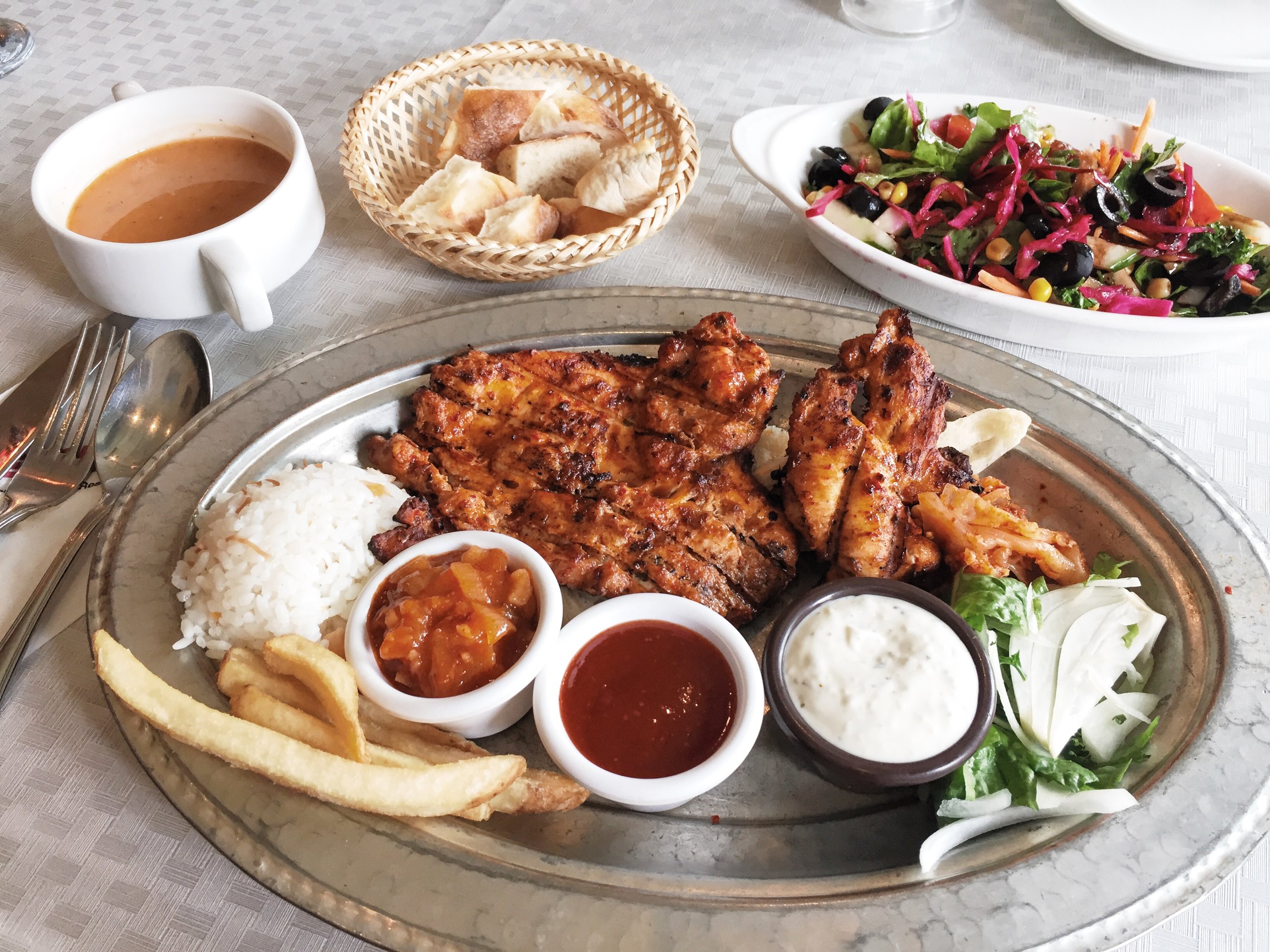Want to strike a conversation with that cutie walking on the streets of Seoul? Granny Kim and her crew shows you how! Learn these simple phrases featured in KWOW episode 57 to get your love life started:
The phrases featured in the episode are FORMAL, which should be used towards those older than you or people you’ve just met. Familiarize yourself with the INFORMAL versions below to widen your dating circle.
Phrases for asking a Korean out on a date, complimenting them, and finding out if they’re single: (Note: Dashes added for easier readability. Not added in cases where neighboring characters share a consonant. Also, some L consonants will have an R sound. This is normal.)
You’re beautiful.
아름다워. Ah-reum-da-wo. (informal)
아름다우시네요. Ah-reum-da-ooh-shi-ne-yo. (formal)
You’re cool.
멋있다. Musheetda. (informal)
멋있네요. Musheetneyo. (formal)
Are you hungry? Shall we go get some food?
배고파? 우리 밥 먹으러 갈까? Bae-go-pa? Oo-ri bap mug-eu-ruh gal-gga? (informal)
배고프세요? 우리 밥 먹으러 갈까요? Bae-go-peu-se-yo? Oo-ri bap mug-eu-ruh gal-gga-yo? (formal)
What are you doing today?
오늘 뭐해? O-neul mwo-hae? (informal)
오늘 뭐하세요? O-neul mwo-ha-se-yo? (formal)
What’s your phone number?
전화번호가 뭐야? Juhn-hwa-bun-ho-ga mwo-ya? (informal)
전화번호가 뭐예요? Juhn-hwa bun-ho-ga mwo-ye-yo? (formal)
Do you want to watch a movie?
영화보고 싶어? Young-hwa-bo-go ship-uh? (informal)
영화보고 싶어요? Young-hwa bo-go ship-uh-yo? (formal)
Are you single?
싱글이야? Shing-geul-ee-ya? (informal)
싱글이세요? Shing-geul-ee-se-yo? (formal)
Do you have a girlfriend?
여자친구 있어? Yuhja-chingoo eess-uh? (informal)
여자친구 있어요? Yuhja-chingoo eess-uh-yo? (formal)
Do you have a boyfriend?
남자친구 있어? Namja-chingoo eess-uh? (informal)
남자친구 있어요? Namja-chingoo eess-uh-yo? (formal)
To learn more about asking if someone has a boyfriend or girlfriend, watch KWOW #54 at 1:07.
Ways to say “YES” to accept the date offer:
Yes, I’m free. When should we meet?
어, 시간돼. 언제 만날까? Uh, shi-gan-dwae. Uhn-jeh mahn-nal-gga? (informal)
네, 시간돼요. 언제 만날까요? Neh, shi-gan-dwae-yo. Uhn-jeh mahn-nal-gga-yo? (formal)
Shall we meet today?
오늘 만날까? O-neul mahn-nal-gga? (informal)
오늘 만날까요? O-neul mahn-nal-gga-yo? (formal)
How about this weekend?
이번 주말은 어때? Ee-buhn joo-mal-eun uh-ddae? (informal)
이번 주말은 어때요? Ee-buhn joo-mal-eun uh-ddae-yo? (formal)
Let’s go eat dinner together.
우리 같이 저녁 먹자. Oo-ri gatchi juhn-yuk mug-ja. (informal)
우리 같이 저녁 먹어요. Oo-ri gatchi juhn-yuk mug-uh-yo. (formal)
I don’t have a boyfriend.
남자친구 없어. Namja-chinggoo upss-uh. (informal)
남자친구 없어요. Namja-chingoo upss-uh-yo. (formal)
I don’t have a girlfriend.
여자친구 없어. Yuhja-chingoo upss-uh. (informal)
여자친구 없어요. Yuhja-chingoo upss-uh-yo. (formal)
Ways to say “NO” to reject the date offer:
I’m busy.
나 바빠. Na ba-bba. (informal)
전 바빠요. Juhn ba-bba-yo. (formal)
Let’s just be friends.
우리 그냥 친구하자. Oo-ri geu-nyang chingoo-ha-ja. (informal)
우리 그냥 친구해요. Oo-ri geu-nyang chingoo-hae-yo. (formal)
I’m married.
결혼했어. Gyul-hon-haess-uh. (informal)
전 결혼했어요. Juhn gyul-hon haess-uh-yo. (formal)
I have a boyfriend.
남자친구 있어. Namja-chingoo eess-uh. (informal)
남자친구 있어요. Namja-chingoo eess-uh-yo. (formal)
I have a girlfriend.
여자친구 있어. Yuhja-chingoo eess-uh. (informal)
여자친구 있어요. Yuhja-chingoo eess-uh-yo. (formal)
Here are some phrases for when your relationship develops:
There’s no one like you.
너밖에 없어. Nuh-bak-eh upss-uh. (informal)
당신밖에 없어요. Dang-shin-bak-eh upss-uh-yo. (formal)
I can’t live without you.
너없이 못살아. Nuh-upsshi motsarah. (informal)
당신없이 못살아요. Dang-shin-upsshi motsal-ah-yo. (formal)
Will you go out with me?
나랑 사귈래? Na-rang sa-gweel-lae? (informal)
저랑 사귈래요? Juh-rang sa-gweel-lae-yo? (formal)
Let’s go see my parents.
내 부모님 보자. Nae boo-mo-nim bo-ja. (informal)
저희 부모님 뵈요. Juhui boo-mo-nim bwe-yo. (formal)
I want to meet your parents.
네 부모님께 인사드리고 싶어. Nee boo-mo-nim-ggeh een-sa deurigo shipuh. (informal)
당신 부모님께 인사드리고 싶어요. Dang-shin boo-mo-nim-ggeh een-sa deu-rhi-go ship-uh-yo. (formal)
Will you marry me?
나랑 결혼해 줄래? Na-rang gyul-hon-hae joo-lae? (informal)
저랑 결혼해 줄래요? Juh-rang gyul-hon-hae joo-lae-yo? (formal)
I love you.
사랑해. Saranghae. (informal)
사랑해요. Saranghaeyo. (formal)
To learn the different ways to say “I love you,” watch KWOW episode #1.
Here are some cute, semi-cheesy yet romantic phrases to use on your sweetie:
I want to see you.
보고 싶어. Bo-go ship-uh. (informal)
보고 싶어요. Bo-go ship-uh-yo. (formal)
I’m cold. Hug me!
추워. 안아줘! Choo-wo. Ahn-ah-jwo! (informal)
추워요. 안아줘요! Choo-wo-yo. Ahn-ah jwo-yo! (formal)
I want to be with you.
같이 있고 싶어. Gatchi itgo shipuh. (informal)
같이 있고 싶어요. Gatchi itgo shipuhyo. (formal)
Don’t go home. Stay with me.
집에가지마. 나랑 같이 있어. Jeeb-eh gajima. Narang gatchi eessuh. (informal)
집에가지마요. 저랑 같이 있어요. Jeeb-eh gajimayo. Juhrang gatchi eessuhyo. (formal)
I like you.
네가 좋아. Nee-ga jo-ah. (informal)
당신이 좋아요. Dang-shin-ee jo-ah-yo. (formal)
To learn more on how to say “like” and “don’t like,” watch KWOW episode #52.
Time to test your newly acquired skills! Take our weekly quiz to see if you can spot this week’s featured KWOW words in K-pop music videos. Answers below exercises.
QUESTION #1: Where do you hear 고백 (GOBEK/confession) in Secret’s “Starlight Moonlight”? Notice 사랑 (SARANG/love) and 좋아 (JOA/like) make multiple appearances.
QUESTION #2: Can you spot 소개팅 (SOGETING/blind date) in 2NE1 “I Don’t Care”?
QUESTION #3: Where does the second 사랑 (SARANG/love) appear in Ailee’s “Heaven”?
***ANSWERS BELOW. No peeking!***
Answer #1: GOBEK appears at 0:46. Answer #2: SOGETING is heard at 2:07. Answer #3: The second SARANG appears at 1:43. (What a coincidence because 143 is the numerical code for “I love you.”) Other SARANGs are sung at 0:59, 2:06, 2:52.
KWOW CONTEST OF THE WEEK:
- Write 10 of your favorite dating phrases from this week’s episode of KWOW.
- Take a photo of your beautiful work.
- Upload the photo onto Twitter.
- Copy and paste the link in the comment section below. (Note: Other submissions may not be considered an entry.)
- Don’t forget to ask your fun/crazy/yummy question to this week’s KWOW host Granny Kim.
- Have fun! The first *seven people* to complete the task will win a reply from Granny Kim :)

















































